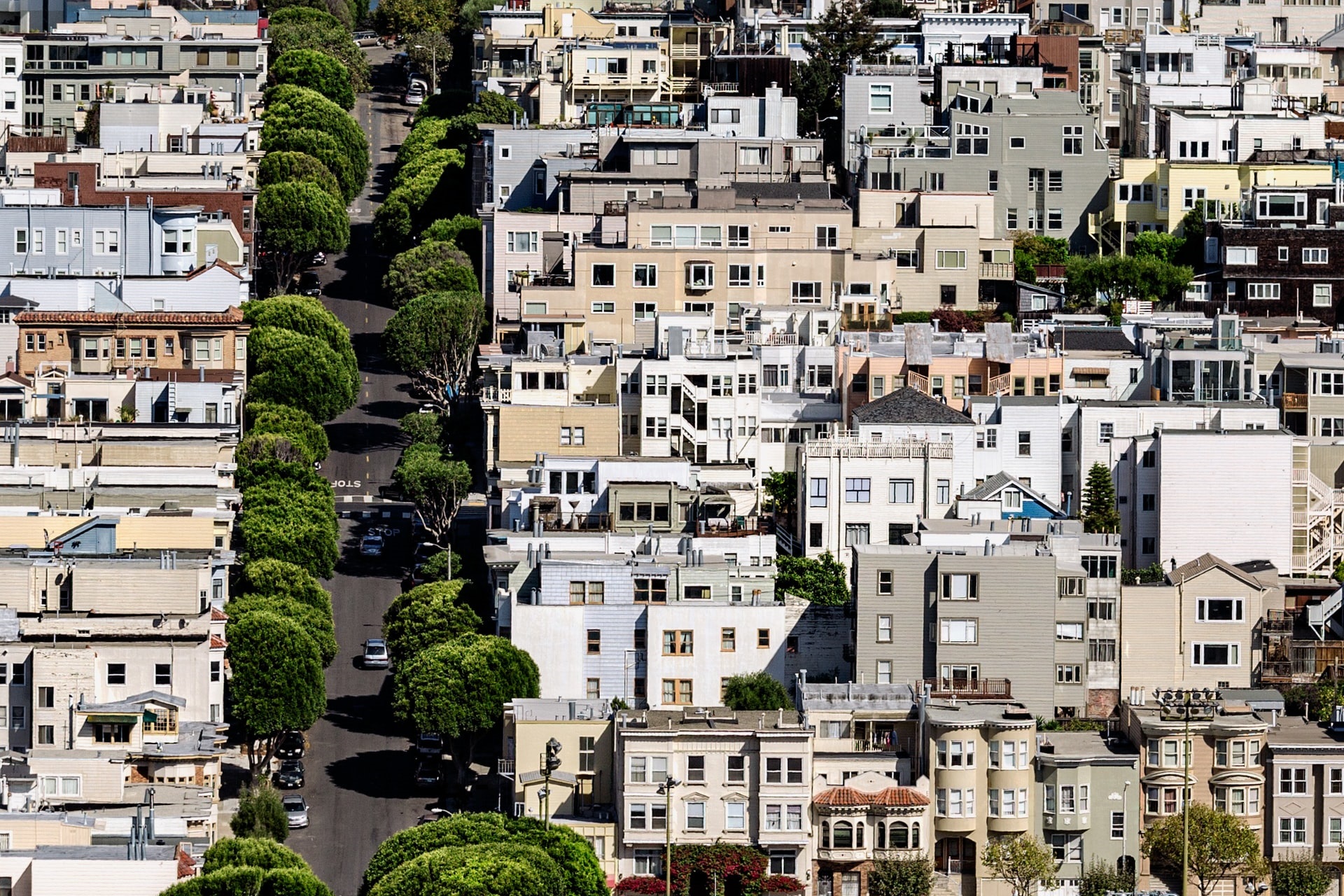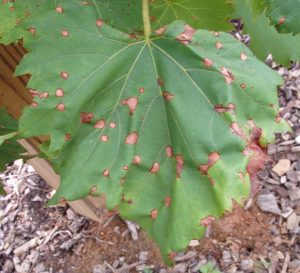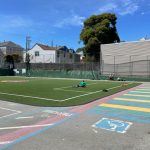
Green is the signature color for environmental issues because it’s the color of healthy plants, and healthy plants are an indicator of a healthy environment. Plants are also critical components of many of the measures proposed to reduce the impacts of climate change. It’s easy to understand why: plants take in climate-damaging carbon dioxide and produce oxygen, which improves air quality for people and animals. Unfortunately, air pollution can make plants sick, and if plants are unhealthy, they may be less effective at countering the effects of air pollution.
This may affect the success of an increasing number of environmental improvement programs that depend on plants. In urban areas, these include adding parks and street trees to provide shade and reduce heat islands, creating community gardens to provide healthy diets for those living in “food deserts”, and planting barriers between residences and freeways. Many trees act as air filters, breaking up sooty air currents and trapping toxic particles with leaves and hairy stems. A 2019 Ohio State study found that adding plants near factories, freeways, and power plants could reduce air pollution by up to 27 percent.
In other areas, plants in marshlands can mitigate sea level rise, provide biomass for renewable fuels, and supply the ingredients for plant-based diets which replace meat from methane-producing animals. Native plants are important for habitat conservation and often reduce water consumption.
“How does horrid air quality affect plant growth? The answer is: The effects are not good.”
Invisible Threat

Ozone damage on a pumpkin leaf. Photo: USDA
For those working directly with plants, air pollution may become a challenging factor in accomplishing their goals. Pam Peirce is the author of a book, Golden Gate Gardening, and a columnist writing about Bay Area gardening for the San Francisco Chronicle. During a Bay Area smoke event in October 2020, she wrote, “How does horrid air quality affect plant growth? The answer is: The effects are not good.”
The problem? “Ash and soot reduce the amount of sunlight reaching leaves, which reduces photosynthesis,” Peirce wrote, adding, “Ordinary smog, the kind that is invisible or appears as a brownish haze, is more harmful to plants in that it . . . interferes with the chemistry of photosynthesis.” She explained that smog is composed of various chemicals, the most common being oxides of nitrogen (NOx) and ozone. The NOx comes from industrial processes and burning fossil fuels in vehicles, diesel generators and landscaping equipment. Add sunlight, plus the volatile organic compounds emitted by products such as gasoline or some pesticides, and the result is low atmosphere ozone.
Both NOx and ozone are harmful, but in different ways. A team battling to save coyote ceanothus in Santa Clara County, where it grows in only a few places, learned that the nitrogen in smog gets deposited on the area’s nutrient-poor serpentine soils and fertilizes invasive plants, which crowd out the ceanothus and other endangered species. Nitrogen deposition from car exhaust also contributes to the growth of invasive grasses like brome and cheatgrass, which dry up in summer and contribute to wildfire danger.

Ozone-related damage on a grape leaf. Photo: USDA
Ozone is the culprit in photosynthesis disruption. The National Park Service has an extensive list of plants that are ozone-sensitive, including ponderosa pine, a common California forest tree, and American sycamore, used in conservation projects and re-greening efforts. Ozone damage plus drought can overstress trees along transportation routes so they sicken and die, becoming fuel for fires. Unfortunately, wildfires release massive amounts of carbon dioxide and other climate-damaging gases and particulates, undoing the benefits of healthy grasslands and forests.
Ann Northrup, a plant pathologist who volunteers at the University of California Extension Sick Plant Clinic, held monthly at the UC Berkeley Botanical Gardens, said that it’s hard to definitively diagnose smog damage from samples seen at the clinic, because location is key. However, Bay Area residents may be able to spot damage from regional and local air pollution on nature walks or in their own gardens. For example, Northrup’s colleague Sam Stewart determined that a yellowing miniature pine in a Pleasant Hill garden was probably being affected by parents creating traffic jams around the neighboring school.
Peirce advised gardeners that “[p]lants growing in smoggy air may not show symptoms, but because they can’t photosynthesize as well, won’t grow as fast. This is particularly problematic for food gardeners, as food crops tend to be ones we expect to grow quickly and produce a crop in a single season. If smog pollution is high, some plants develop “stippling” on leaves—little dark dots that represent dead cells. If the smog continues, spots may merge and leaves die.”
Paths to Improvement
One way to improve the air is to use the plants themselves, but they need to be the right plants for the right places. Peirce recommends checking out the research on “ozone gardens” from the National Center for Atmospheric Research, one of many programs where researchers are working on the interactions between plants and polluted air. Other researchers have learned that the trees which are the most efficient in removing air pollution may not be the best in withstanding it. They are looking for the “superplants” which can stand up to smog and toxic particulates from air pollution.
Even the best performers may not be right for every situation – a cotoneaster which was hailed as being perfect for British roadways is listed as moderately invasive by the California Invasive Plant Council. London plane trees, hybrid sycamores often used as street trees, filter toxic particles and are pollution-tolerant, but may generate some of the volatile organic compounds that contribute to smog. For parks and public works departments, the US Forest Service has a tool for selecting plantings that best meet local needs.
The most basic action, one that anyone can take, is to reduce the air pollution that is causing the problems. A good starting point is the guidance from the Bay Area Air Quality Management District’s Spare the Air program, which can be put into practice every day, not just during air alerts. Think about how to change habits – for example, minimize driving non-electric vehicles, especially early in the day when car exhaust quickly cooks into smog; don’t overfill the gas tank and let fugitive emissions loose; and consider the air impacts of other activities, such as using gas-powered lawn equipment, lighter fluid, or diesel generators. Air pollution can damage people’s health, and now we know it can damage the health of plants as well.
Top Photo: Trees lining a San Francisco Street, Piotr Musiol


